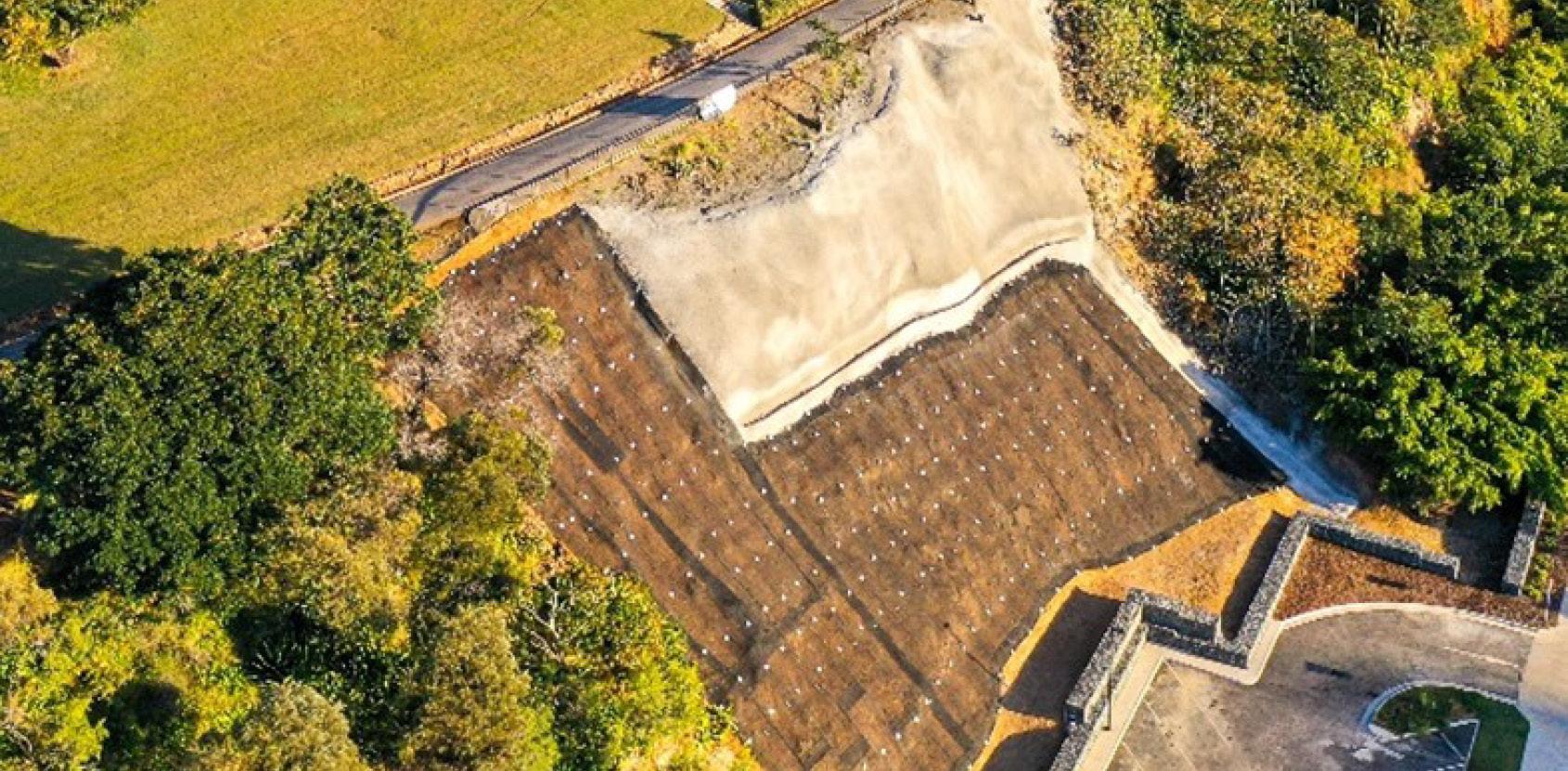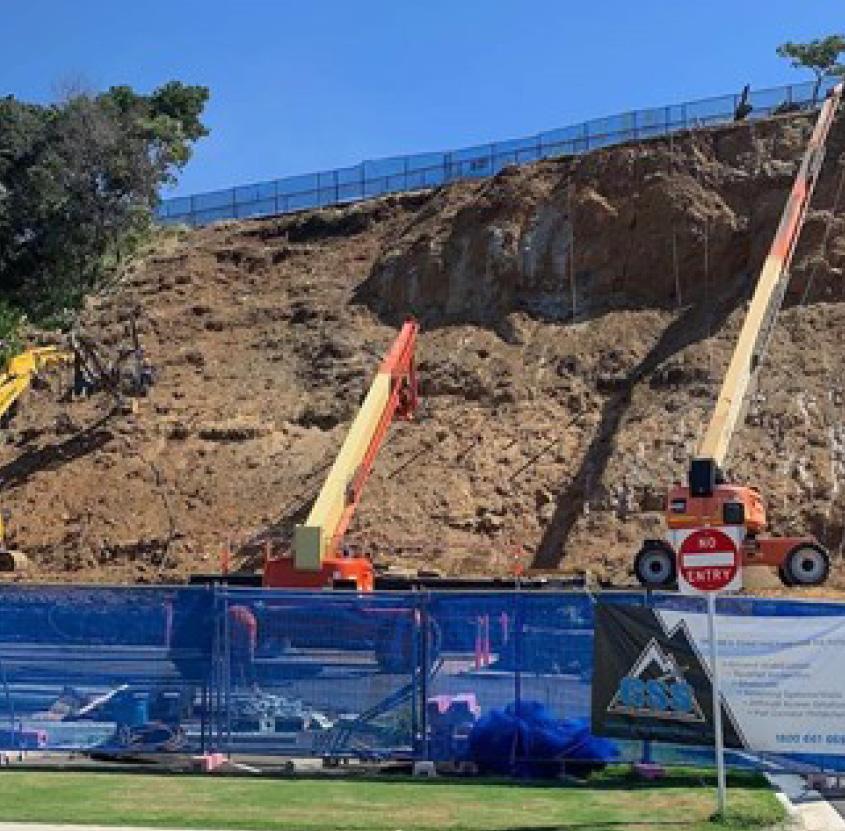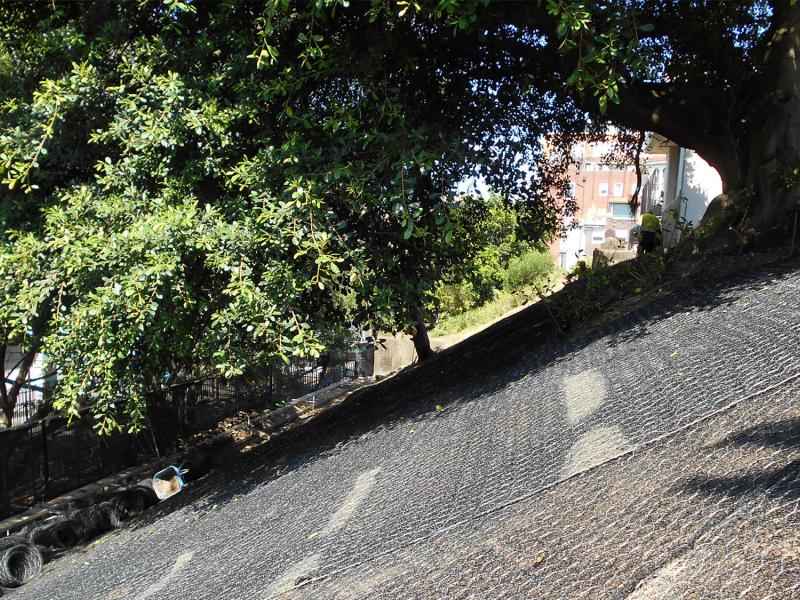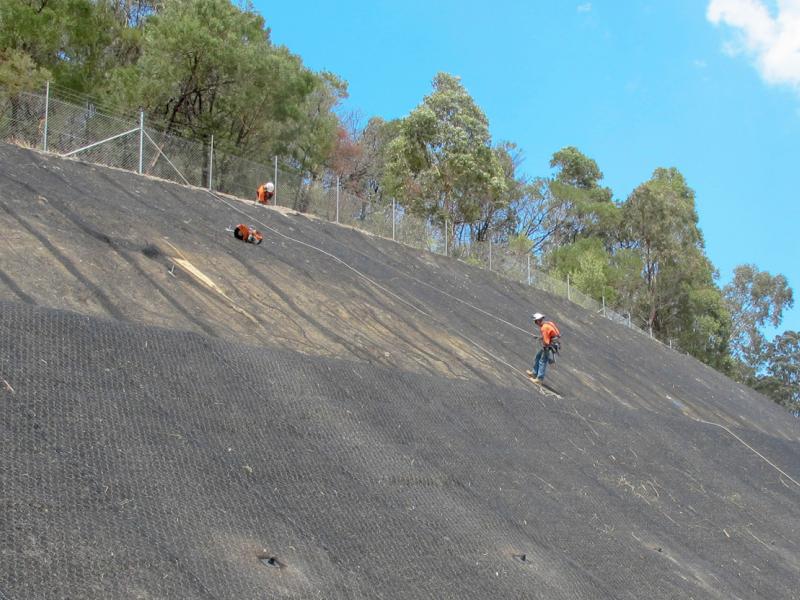
AUCKLAND HILL SLOPE REMEDIATION

PROJECT DESCRIPTION
Coffey Services Australia were engaged by Gladstone Regional Council to undertake a general slope stability assessment and a detailed design of remedial measures for one of the slopes at Auckland Hill.
Situated at the entrance of the harbour, Auckland Hill is a council reserve predominantly used as parkland.
CHALLENGE
In 2008 significant rainfall in the Gladstone region preceded a landslip on the eastern side of Auckland Hill. The area of instability is still mostly bare, or with sparse vegetation, suggesting that the instability is still active, potentially in the form of unravelling and slumping.
The scarp associated with the existing instability is a steep cliff face (approximately 70°) that is 45m wide, has a maximum height of 20m in the northern section, tapering to 2 m height in the southern section.
The exposed rock is highly weathered mudstone/arenite with moderately spaced sub-vertical defects. These are cross cut by low angle joints, forming blocks that have become loose and fallen from the slope.
The joints are generally tight to slightly open, rough, and weathered to form a distinct orange iron oxide or silt infill. A relatively recent debris lobe was observed on the site, as well as areas of debris from past failures. The recent debris lobe combines both residual soil and angular blocks of rock.
Some scrub vegetation has become established on the older debris material, and around the cliff exposure. The slope angle on the lower slope below the steep cliff face is approximately 25 - 40°.
OUR SOLUTION
Coffey contacted Geofabrics to discuss the use of Maccaferri Macmat R® as the engineered flexible facing treatment to the bottom soil nailed slope.
Geofabrics, in collaboration with Maccaferri, provided a comprehensive design suggestion proposal to Coffey to verify the short and long term analyses as well as the ultimate and serviceability limit state checks for the proposed Maccaferri Macmat R® facing.
Two concept design remediation options were presented to the client. Gladstone Regional Council opted to proceed with the one incorporating nailing and shotcrete for the upper slope and soil nailing and double twist woven wire mesh for the lower slope.
The soil nails provide the overall slope reinforcement, while the Maccaferri Macmat R® provides surface strengthening and support between the nail heads.
Used on vulnerable soil slopes exposed to erosion, Maccaferri Macmat R® immediately increases the soil’s resistance to erosion by providing an environment that enhances the growth of vegetation through the mat.
Quality topsoil is typically brushed into the 3D matrix of the mat following installation and hydromulch is applied.
Maccaferri meshes and panels have been extensively tested at recognized technical institutions and on project sites throughout the world.
Testing has been carried out in accordance with UNI EN11437:2012 (Rockfall Protective Measures – Tests on Meshes for Slopes Coverage). The punch testing results are essential for modelling the transfer of the forces on the facing to the nails.







